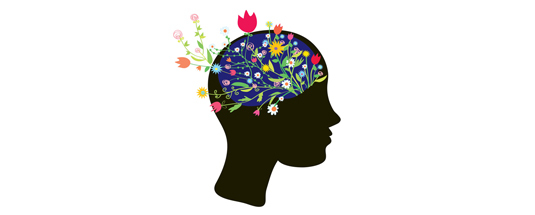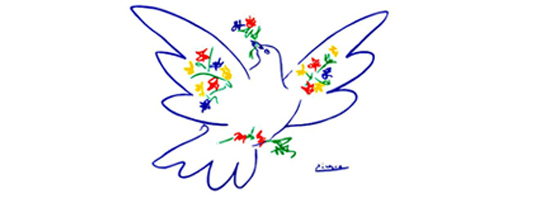
Neuroscience has become quite adept at mapping the brain and they can actually measure your level of inner peace. And here's what they found. We are at our creative cognitive and emotional best when we are at peace. By simply accentuating qualities of a positive peaceful attitude you produce positive changes in your brain that enable you to flourish.
- A peaceful state of mind increases gray matter, making your mind stronger and able to works faster.
- It improves memory, attention, and your capacity to learn.
- You process emotions better, enabling you to feel vibrant and inspired, but not so emotionally charged that you become manic, chaotic, or rigid.
- You are much abler to sustain your focus in a high-stress environment.
- You achieve greater interpersonal resonance and attuned communication.
- You are more empathic, able to see, feel, and understand a situation from someone else's point of view.
As a result of all the above, you are more likely to succeed at life, with greater subjective well-being. A mind at peace generates the brain power to achieve the Good Life, which is a state of flourishing, achieving the health, wealth and love we all desire.
So what does it mean to be at peace?
Let me start by defining what it doesn't mean. Peace doesn't mean to be in a place where there is no noise or hard work or problems. There is a Buddhist parable about a farmer who goes to the Buddha in hopes that the saint can miraculously remove all of his woes. He drones on and on spilling out his troubles, some of which are major, some minor, and a few tragic. When the man is finished, he beseeched the Buddha to make his problems go away."
"I cannot help you with that," the Buddha said. "Everyone has problems. In fact, everyone has eighty-three problems. You may solve one now and then, but another is sure to take its place."
"How is that supposed to help me?" the farmer retorted in frustration.
"Well," answered the Buddha, "perhaps this understanding will help you with the 84 problem, which is the problem of not wanting any problems."
Peace is not about taking away our problems; it's about engaging problems and stressors fearlessly, with the calm, creativity, and optimism that generates the brain power to solve them.
Some people think that a peaceful attitude makes us complacent, but inner peace is a vibrant, dynamic state of mind. It fosters in us an open, curious vitality that is fully present and able to engage life exactly as it is.
Inner peace is a dynamic choice that leads to a dynamic way of being in the world. And ... it doesn't tend to happen all by itself. Peace develops out of that voluntary state of mindfulness called choice. The more mindful we are about choosing to be at peace, the more we experience it. The more we experience it, the more we come to treasure it. The more we treasure our peace of mind, the more expansive it becomes.
Peace takes practice and practice takes discipline, which is simply knowing what you want to experience, and then choosing it consistently. The core choice is basic; it's between fear and peace. It begins with mindfully asking ourselves, what do I want to experience as I face people and events each day.
Mindfulness asks: What do I want to experience?
Do I want to be stressed or calm and clear ... Afraid of failing or creative ... Critical or empathic ... Think negative or positive ... Worry or have faith ... Remain stuck or let go ... Angry or composed ... Condemning or forgiving ... Self-righteous or happy.
Byron Katie, author of Loving the Way It Is, says this about the way practice works. She says once a stressful, anxious perception is understood for what it is and met with the feeling of understanding, the next time it appears you may find it interesting. What used to be a nightmare is now just interesting. The next time after that you may find it funny and after that you may not even notice it.
The stressful fearful perception has left your mind making room for you to be peace, and your brain will reward you with the higher brain function that enables you to sustain your best self, achieving your best day, every day.
If peace has alluded you, here's a tool that can help establish it in your daily life. It's called the 30-Second Time Out for Peace. Use it for a couple of weeks and then move to taking walks in nature two or three times a week, leaving all your troubles and problems behind you as you take the first step. From here you can move to mindfulness practice that can deepen your peace of mind. I present a simple step by step practice in my book The End of Stress.
30-Second Time Out for Peace
- Stop what you're doing and step away from the world for a moment.
- Let go of what you were thinking and allow yourself to relax a little.
- Now allow yourself to relax a little more.
- Let go of everything. Feel your brain relax as you let go.
- No worries, no problems, no goals. Just let them all go for a moment.
- Take a slow, deep breath - and as you do - let your mind and heart open wide.
- Allow peace to begin to emerge as your experience, all by itself.
You can do this short exercise just about anywhere: standing in line, walking to a meeting, or looking out a window. Try it a few times throughout today and see what happens to your day.
images: canstockphoto.com


